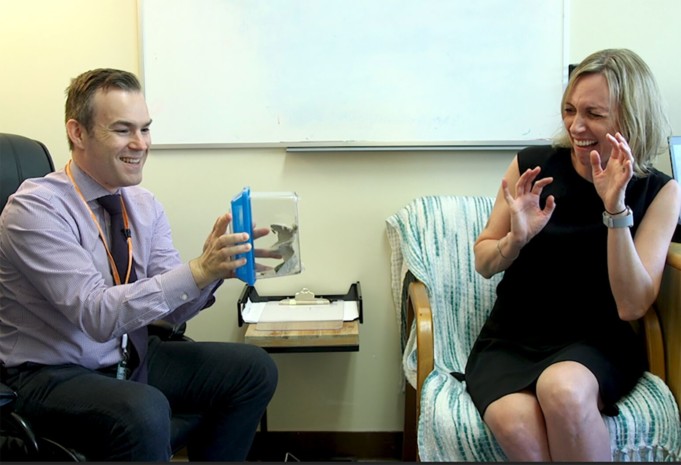Exposure therapy has been regarded as one of the most effective treatment methods for phobias and mental health conditions.
This is a form of behavioral therapy that is created to help people properly manage problematic fears. With the use of various systematic techniques, an individual is gradually exposed to the things or situation that causes them distress.
The main aim of exposure therapy is to create a safe environment, in which an individual can reduce anxiety, lessen avoidance of dreaded situations, and also improve their quality of life.
How Does Exposure Therapy Work?
When people experience anxiety as a result of a specific fear, phobia, or traumatic memory, they will do all they can to avoid anything that reminds them of these uncomfortable situations.
This avoidance may seem like a great idea because it provides temporary relief, but it ultimately maintains the irrational fear and avoidance behavior. In some cases, avoidance can make things even worse and give more strength to feared objects or scenarios.
Exposure therapy is specially created to reduce the irrational feelings that an individual may have assigned to an object or situation by safely exposing him or her to various aspects of that fear.
For example, while dealing with someone who has an irrational fear of spiders—arachnophobia—the exposure therapist might first ask the patient to picture a spider in his or her mind.
This may lead up to several sessions, which will involve the therapist asking the person to mentally picture scenes that are more intense, involving a spider.
All of these will be done while teaching coping skills and also providing the necessary support. Once there is a record of reduced anxiety response, the therapist may then progress to real-life exposure.
In real life exposure, the therapist may begin by placing a contained spider at the extreme of the room, and then lead up to putting the spider in the individual’s hand.
History of Exposure Therapy

Exposure therapy can be traced back to the work of behaviorists like John Watson and Ivan Pavlov in the early 1900s. The roots can also be traced to principles of Pavlov’s classical conditioning.
Arguably, Pavlov’s dog experiment in which he had to methodically train a dog to salivate at the ring of a bell, is the most famous example of classical conditioning. In 1924, another step was taken closer to exposure therapy behaviorist by Mary Cover Jones.
She carried out studies on counter-conditioning. It was described as the process of changing an unwanted, learned response to another learned response that is more desirable.
Mary cover Jones was known to use pleasurable experiences and comfort food to gradually “erase” a child’s fear of rabbits.
Three decades later, in 1958, the behaviorist named Joseph Wolpe developed systematic desensitization. This is a technique involving relaxation training, anxiety hierarchy (this means listing anxiety-producing triggers from most disturbing to least disturbing), and exposure is used to reduce a person’s sensitivity to the situations he or she dreads.
In the 1970s, Stanley Rachman created exposure and response prevention while he worked with people dealing with obsessions and compulsions. In this treatment method, patients were encouraged to bring up obsessive thoughts and purposely refrain from performing compulsions or behaviors that are anxiety-reducing.
Over the last three decades, exposure therapy has continued to broaden. Also, both systematic desensitization and exposure and response prevention (ERP) are very much in use today.
Techniques Used in Exposure Therapy
Exposure therapy employs various methods to promote the reduction of troubling emotional reactions and responses.
Exposure therapists will carry out assessments to determine the right combination of techniques that will be most effective.
Types of Exposure
- Imaginal Exposure: In an exposure method like this, a person in therapy is required to mentally confront the situation or fear by picturing it in his or her mind. For example, a person who has agoraphobia, a fear of crowded places, may have to imagine standing in a hall or crowded mall.
- In Vivo Exposure: When you choose this type of exposure, you will be exposed to real-life scenarios and objects. For example, a person who has a fear of flying may have to go to the airport to watch a plane take off.
- Virtual Reality Exposure: This is a type of exposure that combines elements of both in vivo and imaginal exposure so that a person will be placed in situations that may appear real but are indeed fabricated. For instance, someone with a fear of heights—acrophobia—may have to participate in a virtual simulation of climbing all the way down a fire escape.
Specific Exposure Therapy Techniques

Systematic Desensitization: This is a method of Treatment that uses relaxation training, the creation of an anxiety hierarchy, and slow but steady exposure to the item or situation that is feared.
The relaxation training may include slow but regular muscle relaxation, soothing sights and sounds, and guided imagery.
The adopted anxiety hierarchy might use something such as Wolpe’s Subjective Units of Discomfort Scale (SUDS) to make a list of events that trigger anxiety on a scale from 0-100.
Then, during the steady exposure phase to the ranked items, the relaxation techniques that have been learned are applied to offset anxiety and stress.
Graded Exposure: This is a treatment technique that is much like systematic desensitization, but doesn’t involve the use of any form of relaxation techniques.
Flooding: In this treatment technique, exposure can be imaginary or in vivo. A person is purposely exposed to intense anxiety-evoking events for an extended period. Flooding will usually be carried out until the anxiety is greatly diminished.
Prolonged Exposure (PE): This method had been proven effective with the treatment of trauma-related issues. This method of treatment is very similar to flooding but also involves cognitive processing and psychoeducation.
Exposure and Response Prevention (ERP): This is a useful technique for individuals who are experiencing obsessions and compulsions. The ERP treatment method works to weaken the link between compulsion and obsessions. Therapists will have to provoke a person’s obsessions and request that the person does not engage in their compulsion or behavioral rituals.
How Effective Is Exposure Therapy?
There has been a proper documentation of the benefits of exposure therapy, and many studies and research cite exposure therapy as an effective first-line treatment for many mental health concerns.












